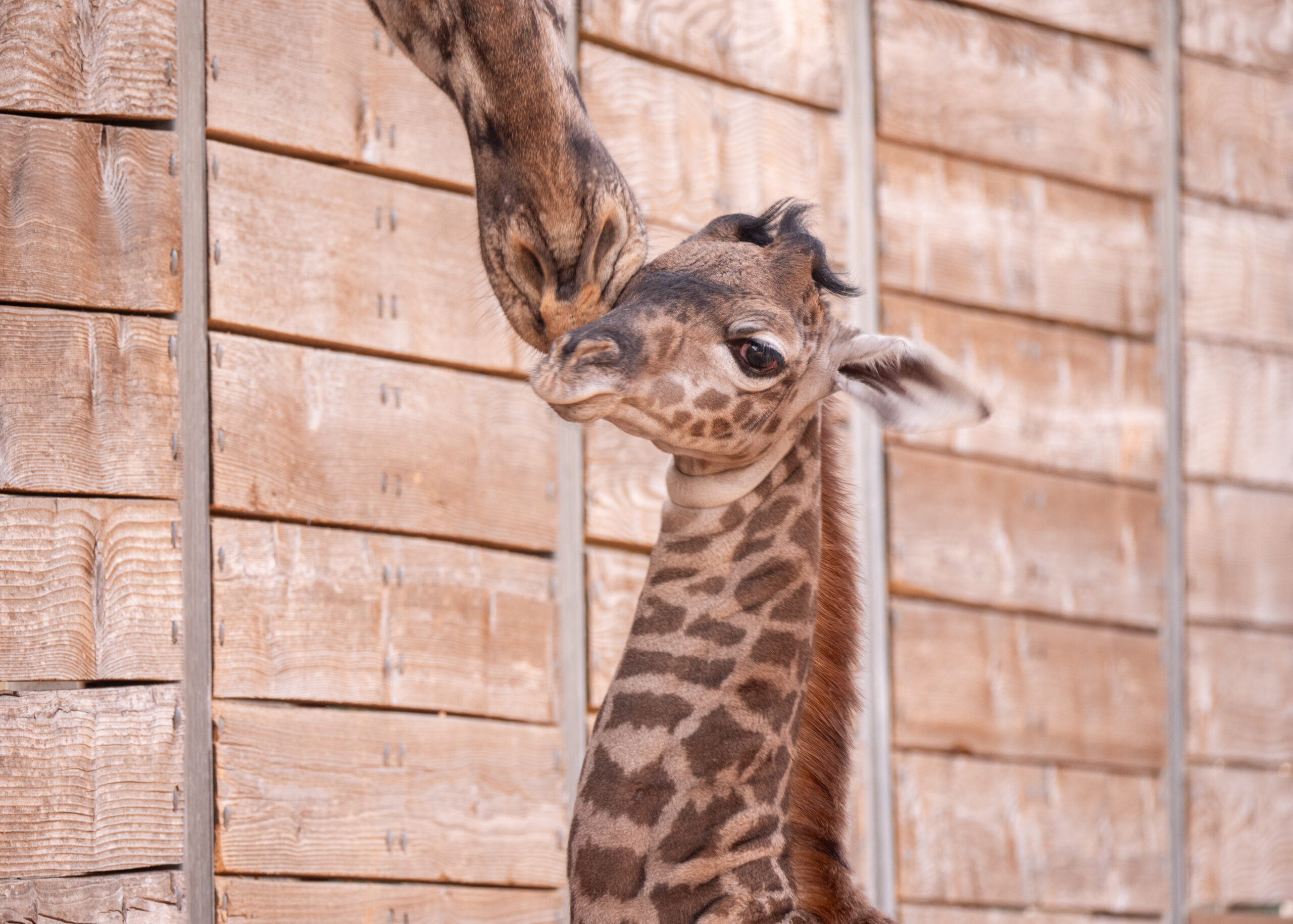Summary of Houston Zoo Welcomes New Arrival:
A new baby Masai giraffe named Tino was born early Saturday morning at Houston Zoo to a nine-year-old giraffe named Kamili. Tino thrives under Kamili’s care, weighing 160 pounds and standing six feet tall shortly after birth. The male giraffe‘s arrival was anticipated, though the exact timing was unknown due to the approximate 14-month gestation period. The Gordy Family named Tino, longtime supporters of the zoo. He will spend his mornings in the McGovern Giraffe Habitat and afternoons bonding with his mother behind the scenes. His father, Zawadi, stands at 16 feet tall, a height Tino might reach or surpass as he grows. The Houston Zoo works to protect wild giraffes in Africa by funding local conservation activities. A portion of every admission ticket goes towards these efforts, contributing to protecting species like the Masai giraffe in their natural habitats.
– Introduction to the birth of Tino, the baby Masai giraffe at Houston Zoo and its impact on giraffe conservation efforts
– The role of zoo breeding programs in wildlife conservation and species preservation
– Houston Zoo’s contribution to giraffe conservation in Africa through funding and support
– Educational and visitor engagement initiatives at Houston Zoo aimed at raising awareness about giraffe conservation
– Future outlook for giraffe conservation efforts and the implications of zoo-based initiatives
—
The Houston Zoo recently celebrated a significant addition to its family with Tino, a male Masai giraffe born to mother Kamili. This event has captivated the attention of wildlife enthusiasts and conservationists, underlining the zoo’s commitment to preserving this species. Tino’s birth is a joyous occasion and a critical step forward in fighting against the declining populations of giraffes in the wild.
Breeding programs in zoos are pivotal in wildlife conservation, offering a sanctuary for endangered species to reproduce under close observation and care. These initiatives are essential for maintaining genetic diversity, studying animal behaviors, and raising public awareness about these majestic creatures’ challenges in their natural habitats. The Masai giraffe, like Tino, is one such species that benefits from the concerted efforts of zoo breeding programs. These programs simulate natural environments as closely as possible, fostering conditions that encourage natural behaviors while providing care responsive to the giraffes’ health and well-being needs.
The Houston Zoo stands out for its proactive approach to conservation, extending its impact far beyond its gates. By funneling a part of every admission ticket into conservation efforts, the zoo directly supports African programs that protect giraffes from poaching, provide medical care, and monitor their populations in the wild. This approach highlights an essential link between zoo visitations and conservation funding, illustrating how public engagement and support can contribute to significant conservation outcomes.
Educational programs and initiatives at the zoo serve as a bridge between visitors and the realities of giraffe conservation, transforming interest into action. Through interactive exhibits, information sessions, and direct involvement in conservation projects, visitors gain insights into giraffes’ challenges, such as habitat loss and illegal hunting. This knowledge empowers individuals to contribute to conservation efforts through direct donations, advocacy, or lifestyle choices that align with environmental sustainability.
Looking towards the future, conservation efforts underpinned by institutions like the Houston Zoo are becoming more critical than ever. With giraffe populations declining in the wild, the role of zoos in conservation, education, and research is invaluable. Programs that support wild giraffes and initiatives that foster public engagement are key strategies in ensuring the survival of species like the Masai giraffe. The birth of Tino not only represents hope for his species but also symbolizes the continuous dedication of zoos to wildlife conservation. Through persistent efforts in breeding, funding, education, and public engagement, zoos contribute significantly to the preservation of species and our planet’s biodiversity.
The unfolding story of Tino and the role of the Houston Zoo in giraffe conservation serves as a beacon of hope and a call to action. It emphasizes the importance of scientific research, public education, and community support in preserving our world’s precious wildlife. By visiting zoos, participating in conservation programs, and spreading awareness, every individual can ensure a future where giraffes like Tino thrive in the wild, safeguarding the natural world for generations to come.


